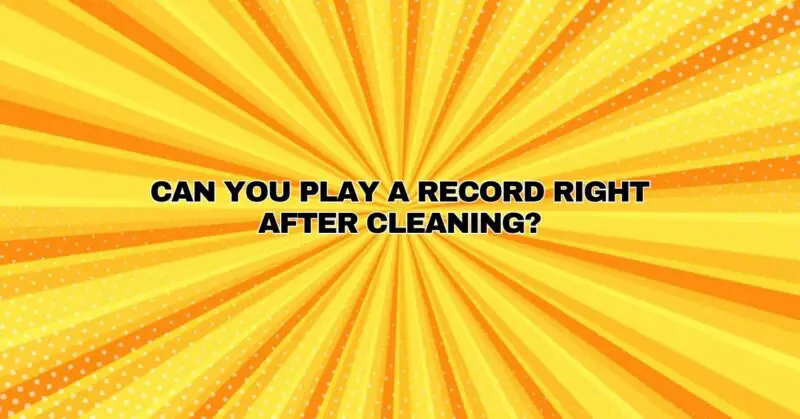Vinyl records, cherished for their analog warmth and enduring appeal, have a devoted following among audiophiles and music enthusiasts. Proper care and maintenance of your vinyl collection are essential to preserving its sound quality and longevity. One common question that arises during the vinyl ownership journey is whether you can play a record immediately after cleaning it. In this article, we will explore the intricacies of vinyl record cleaning, including the methods, materials, and considerations that determine when it’s safe to play a freshly cleaned record.
The Importance of Vinyl Record Cleaning
Vinyl records can accumulate dust, dirt, and debris over time, which can negatively impact audio quality and cause audible imperfections during playback. Cleaning your records is a fundamental step in ensuring that they sound their best and that your stylus remains in good condition. Clean records not only produce clearer sound but also extend the lifespan of your vinyl collection.
Methods of Vinyl Record Cleaning
Several methods are commonly used to clean vinyl records, ranging from basic dry cleaning to more thorough wet cleaning techniques:
- Dry Brushing: Dry brushing involves using a soft brush with fine bristles to remove surface dust and debris from the record. While this method is quick and easy, it is less effective at removing deeper-seated contaminants.
- Carbon Fiber Brushes: Carbon fiber brushes are a step up from basic dry brushing. They have conductive bristles that help neutralize static electricity, reducing the attraction of dust particles to the record.
- Wet Cleaning: Wet cleaning involves using a specialized record cleaning solution, a brush or cleaning machine, and a vacuum to remove dirt and contaminants from the grooves. This method is highly effective at deep cleaning records but requires more time and equipment.
Playing a Record After Cleaning
Whether you can play a record immediately after cleaning depends on the cleaning method you have employed:
- Dry Brushing or Carbon Fiber Brushing: If you have used a dry brush or a carbon fiber brush to clean your record, it is generally safe to play it immediately. These methods remove surface dust and do not introduce moisture to the record.
- Wet Cleaning: Wet cleaning involves the use of a liquid cleaning solution, which can introduce moisture to the record’s grooves. It is advisable to allow the record to air dry completely before playing it. This typically takes a few minutes, depending on environmental conditions.
Additional Considerations
While dry brushing or carbon fiber brushing is suitable for quick maintenance and surface cleaning, wet cleaning is recommended for more thorough cleaning. Here are some additional considerations when wet cleaning vinyl records:
- Record Cleaning Machine: A record cleaning machine, often referred to as a vacuum record cleaner, is a valuable investment for serious vinyl enthusiasts. These machines provide a comprehensive cleaning process and ensure that the record is thoroughly dried before playback.
- Proper Drying: After wet cleaning, it’s essential to allow the record to dry completely before playing it. Air drying the record vertically in a dust-free environment is ideal.
- Cleaning Solution: Use a high-quality and recommended record cleaning solution to avoid any potential residue or damage to the vinyl.
Conclusion
Cleaning your vinyl records is an essential part of maintaining their sound quality and overall condition. While dry brushing or carbon fiber brushing allows you to play a record immediately after cleaning, wet cleaning, which provides a deeper and more thorough cleaning, requires proper drying time. By following the appropriate cleaning method and allowing for adequate drying, you can ensure that your vinyl records consistently deliver their analog warmth and pristine sound, enhancing your listening experience for years to come.


